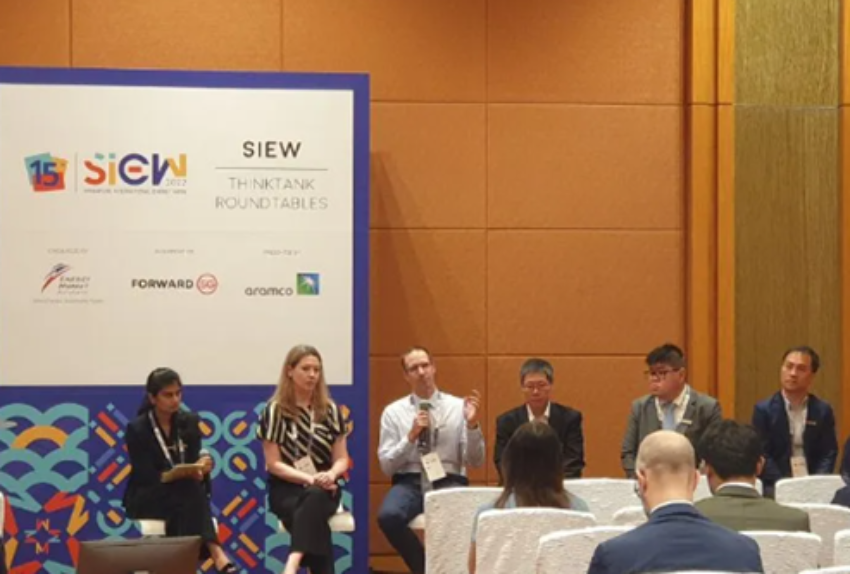
The SIEW Thinktank Roundtable session, hosted by the Singapore Institute of Technology (SIT), provided a strategic and holistic exposition of the essential considerations for energy imports to meet Singapore’s decarbonisation ambitions. A fundamental top-down analysis also saw various perspectives offered, from the technical to the commercial and from Environmental, Social and Governance (ESG) to the geopolitical.
A diverse panel of local and international energy experts from countries leading the renewables charge, such as Australia, the US and Europe, shared insights covering both fundamental concepts and real-world learnings.
Dr Dhivya Sampath Kumar, Assistant Professor at SIT, opened the session by highlighting viable options for Singapore. These include renewable energy imports through regional electricity interconnections and green storage options to achieve the country's net zero goal by 2050. She also emphasised the need for Singapore to learn from the experiences of countries that have achieved significant renewables uptake. This should factor in learnings from a systems, economic, policy as well as market perspective.
The first invited panellist was Lana van Wyk, Principal Advisory, Hydrogen – Hatch. She discussed the role of hydrogen and ammonia in decarbonisation and grid stability by sharing the hydrogen-to-grid cyclic infrastructure. In addition, she drew attention to the early adopters of hydrogen in Australia and their supply models. Ms van Wyk also spoke about her company's findings on the cost of producing and storing hydrogen for renewable energy generation.
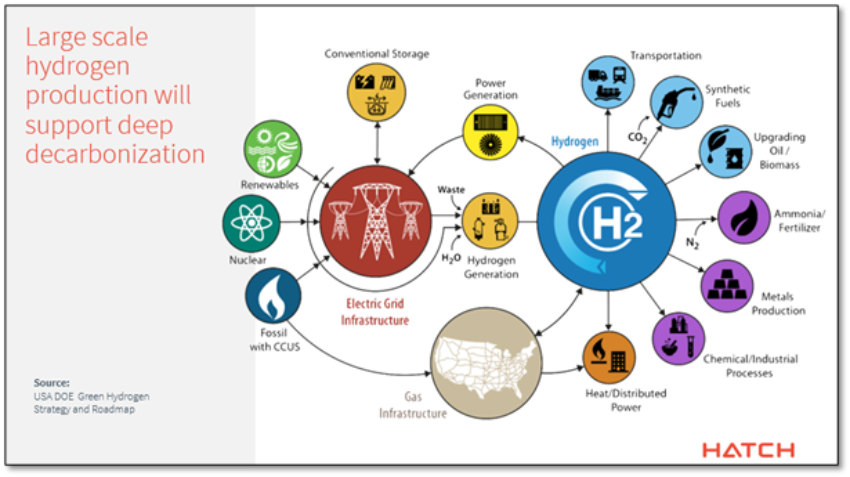
The next sharing, by Dan Kell, Senior Director-Power System Studies and HVDC, Hatch PD&I, was on the high-voltage direct current (HVDC) technology and its role in supporting energy imports. He presented on the history and background to HVDC, before focusing on its advantages when it came to AC power cables, especially for long-distance transmissions. Mr Kell also spoke about the new technological improvements in HVDC. He concluded by emphasising the need for countries to adopt HVDC for connecting grids over long distances.
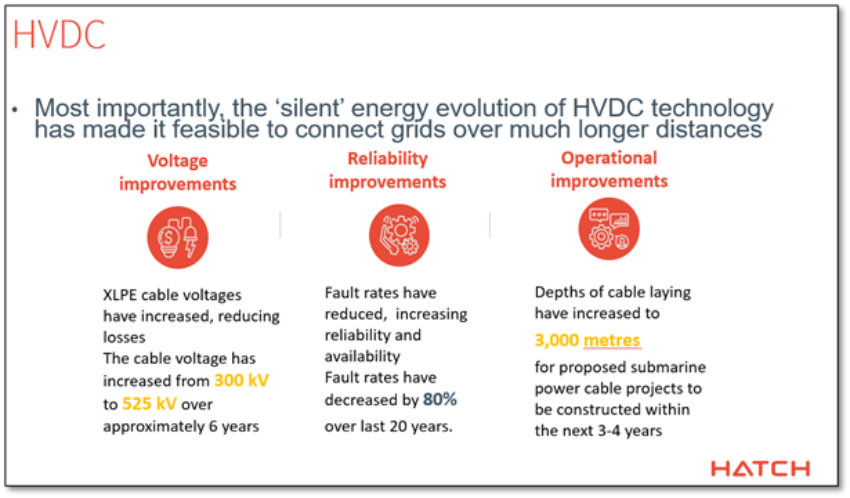
Dr Wong Wai-Kin, Energy Systems & Technologies Integration Lead – Australasia, Hatch, was next to talk about the role of Battery Energy Storage Systems (BESS). He reviewed various use cases and value streams of BESS, from supply reliability to system security and grid ancillary services. He proposed that BESS can serve as dispatchable resources and function as an alternative to conventional synchronous generation sources to backfill system security support.
He shared various technical and commercial use cases of Australian BESS that have been employed for grid services, to support grid stability. He highlighted possible considerations for future BESS deployment in Singapore.
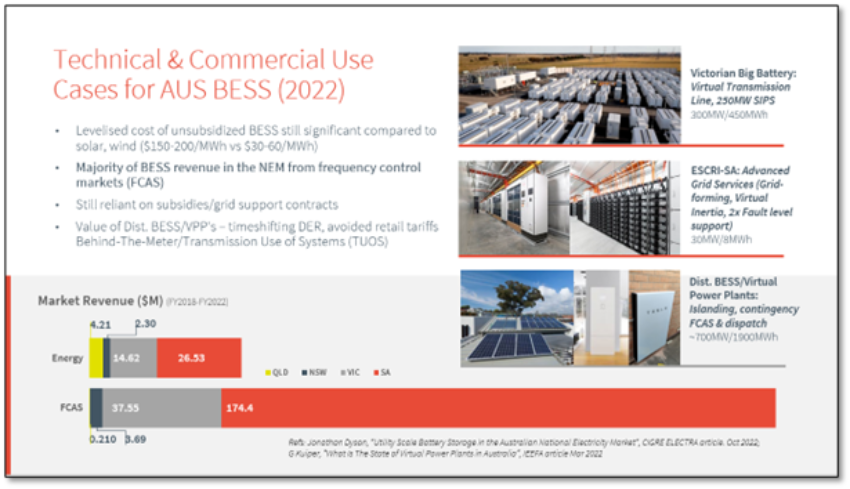
To discuss market policies and regulation which function as enablers for energy imports was Li Zhenhui, Chief Economist from Energy Market Company. He spoke about the possible ways of integrating various low-carbon energy sources, such as electricity imports, into Singapore's wholesale electricity market. This would need to take into consideration the security, sustainability and affordability objectives of Singapore's energy policies.
Importing renewable energy from neighbouring countries would likely be a key solution for Singapore's transition towards net zero if the world cooperates globally and regionally, he said. He added that onshore Energy Storage Systems such as BESS can play a critical role as "backups" in Singapore's overall energy import strategy.
Mr Li stressed the need for markets to evolve and adopt a framework that can accommodate the characteristics of a net zero fuel mix consisting of BESS, energy imports and Distributed Energy Resources. This will help provide reflective wholesale prices to attract "green" energy investments.
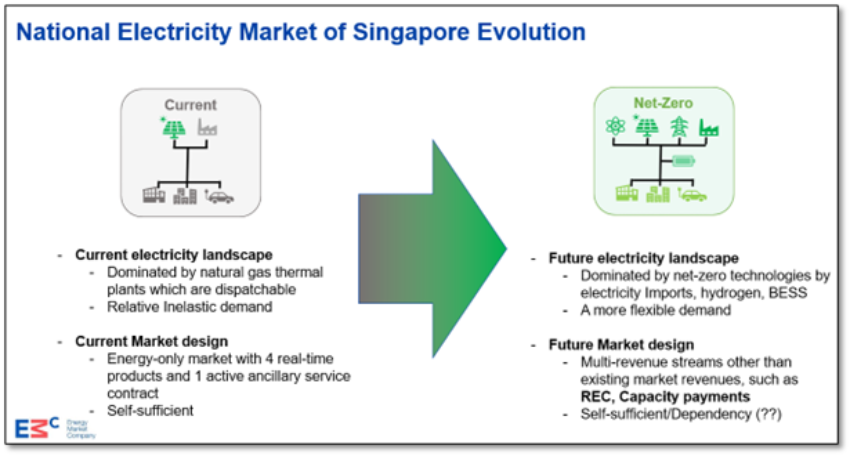
Rounding up the session was Dr Seck Tan, Assistant Professor for SIT. He discussed sustainable development policies in the energy transition, covering impacts on ESG. He introduced ESG and highlighted the need for sustainable development.
Dr Tan also said that a successful switch towards carbon reduction would require strong support for infrastructure, operation, and technology. In the process of reducing carbon emissions (with alternative energy sources), he noted that there will be an inevitable impact on the environment, society, and institutions. Thus, the transition to alternative energy must factor in an ESG perspective for alternative energy security.
Dr Tan added that the approach to alternative energy must take into consideration a secure power supply given its intermittency availability. This would be alongside equity, efficiency and distribution. Furthermore, policies will need to be implemented to educate, inform, incentivise and penalise the actors and institutions involved.
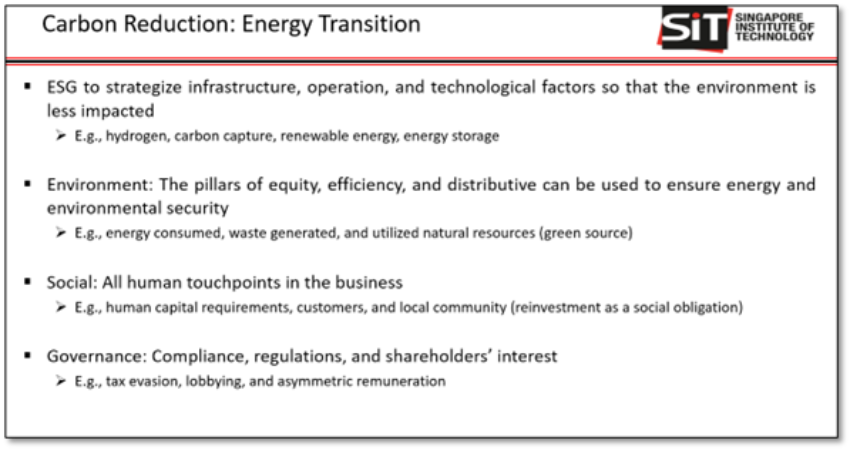
The panel discussion that followed gave rise to rich conversations and vibrant debates on energy security and decarbonisation. Ms van Wyk elaborated on the Australian government’s support for hydrogen initiatives as well as the various government-funded projects in the country. She also spoke on the significance of government support for early adopters.
Dr Wong offered his insights on whether grid-forming technology is necessary for the initial adoption of large-scale BESS in Singapore.
When asked what a successful energy market in Singapore should look like, Mr Li explained that Singapore’s market and policies would need to evolve to support the Government’s initiatives.
The push for stronger climate action, driven by current geopolitical developments impacting energy prices and security, has provided greater impetus for economies to decarbonise more aggressively and urgently. Jurisdictions would need to ensure this is conducted in a reliable, secure, economic, and sustainable manner.
Countries such as Singapore that lack natural (onshore) renewable resources to fully decarbonise, would need to consider energy imports though regional interconnections. They would also need to factor in chemical storage transportation such as hydrogen and ammonia. Other aspects include technical, commercial, ESG, geopolitical considerations in our journey towards net zero.